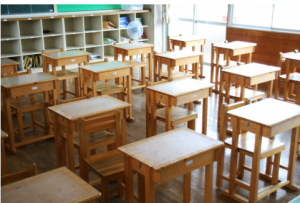I sometimes talk about the Australian educational system to Japanese delegations.
One of the differences is Japan adopts the 6-3-3 system, while most states in Australia adopt the 6-6 system. We have primary school that is almost similar to year 1 to 6, junior high school that is year 7 to 9 and senior high school that is year 10 to 12.
We usually go to kindergarten or nursery school for two or three years before entering primary school. Most of the students prepare for exams to enter high school as well as university. So usually, Japanese students study harder than usual twice in their school days. Some children (or better said, some parents) prefer a private school which has both a junior and a high school or even a unified school program from kindergarten to university.
The role of the local governments is also different. Municipalities are responsible for the operation of primary and junior high schools, while prefectures are responsible for high schools, although prefectural governments pay for most of the salaries of all levels of teachers. One third of this cost and part of the school operation cost such as rebuilding schools are funded by the central government.
Even though the system varies from country to country, to learn about other countries’ educational systems is very important to deliver better education.
In that sense, I would like to develop educational exchange between Japan, Australia and New Zealand.







 12月3~13日、福岡県水泳連盟の選抜選手8名がNSW州を訪問し、現地の学校との合同練習とNSW州の大会に参加しました。
12月3~13日、福岡県水泳連盟の選抜選手8名がNSW州を訪問し、現地の学校との合同練習とNSW州の大会に参加しました。

